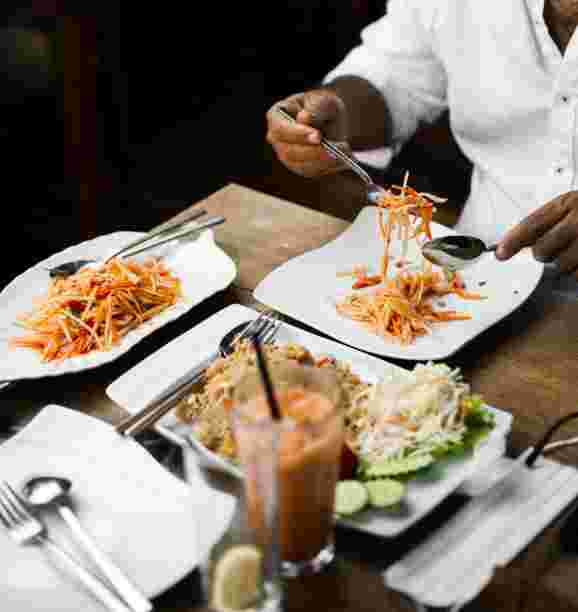Pad Thai Noodles are often celebrated for their bold flavor and visual appeal, but their real power lies in their simplicity. This iconic Thai dish has made its way from humble roadside stalls in Bangkok to dinner tables around the world, not because it's flashy, but because it's accessible, flavorful, and satisfying. It’s a dish that proves great food doesn’t have to be complicated.
First introduced as part of a national movement to modernize and unify Thailand in the 1930s and 1940s, Pad Thai was promoted by the government as a national dish. With a focus on rice noodles, it encouraged local food production while showcasing Thai ingredients. The dish quickly became a staple not only due to its patriotic roots but because it was quick to prepare, affordable, and delicious.
Now, Pad Thai Noodles are seen on menus across Europe, America, Australia, and beyond. While there are hundreds of international noodle dishes, few have the same cultural depth or emotional connection as Pad Thai. This connection stems from its authenticity, balance of flavors, and the way it invites personalization without losing its soul.
Why the Dish Works So Well
Pad Thai Noodles have earned their reputation because of their balance. The sauce combines four central elements: tamarind for sourness, palm sugar for sweetness, fish sauce for salt, and sometimes dried chili for heat. These ingredients, when combined properly, create a flavor that is unique yet universally appealing.
The dish begins with rice noodles, which are naturally gluten-free and absorb flavor exceptionally well. They are stir-fried with eggs and proteins like tofu or shrimp, then tossed in the prepared sauce. Timing is essential too long in the pan and the noodles turn soggy; too short and the flavors don’t come together. It’s this delicate balance that transforms a few simple ingredients into something special.
Texture is another crucial component. Pad Thai Noodles are soft and chewy, but they're paired with crunchy bean sprouts, roasted peanuts, and fresh herbs. Lime wedges served on the side offer a citrus lift that brightens the dish just before eating. It’s an orchestra of textures and flavors in one bowl.
And despite its traditional roots, Pad Thai has evolved gracefully into many variations. Some are more refined for upscale dining, while others stick to street food tradition. Yet in all versions, the core remains: a perfect fusion of simplicity and depth.
How to Master Pad Thai at Home
Many people assume that Pad Thai Noodles are too difficult to make at home, but with preparation and the right ingredients, it’s surprisingly manageable. The first step is soaking the rice noodles in warm water until pliable. Unlike Italian pasta, they don’t need to be boiled overcooking ruins their texture.
Next, prepare all the components in advance. This includes scrambling eggs, slicing scallions, pressing tofu or marinating shrimp, and mixing the sauce. Stir-frying should be done quickly over high heat. A wok is ideal, but a wide, flat-bottom pan works well too.
When stir-frying, cook the protein first and remove it. Then add the noodles and sauce, followed by the eggs and vegetables. Return the protein at the end and mix thoroughly. Garnish with crushed peanuts, lime, and fresh herbs for that signature finish.
Cooking Pad Thai Noodles successfully is less about perfection and more about rhythm. Once you’ve made it once or twice, it becomes an instinctive one of those dishes you can throw together with confidence and creativity.
FAQs
Is Pad Thai originally from Thailand?
Yes, Pad Thai was created in Thailand and promoted as a national dish in the mid-20th century. It was designed to highlight local ingredients and unify the country through a shared food identity.
What type of noodles are used in Pad Thai?
Pad Thai uses flat rice noodles, which are soft, chewy, and excellent at absorbing sauces. They are naturally gluten-free and typically made from just rice flour and water.
Can I make Pad Thai without fish sauce?
Yes, while fish sauce provides umami, you can use soy sauce or tamari as a vegetarian or vegan substitute. Just be aware the flavor will change slightly, though it can still be delicious.
Is Pad Thai supposed to be spicy?
Not necessarily. Traditional Pad Thai is more tangy and sweet than spicy. However, heat can be added to taste using chili flakes or fresh chili peppers either during cooking or at the table.
Why are my Pad Thai noodles sticking together?
This usually happens when the noodles are over-soaked or not stir-fried quickly enough. Make sure to soak only until pliable and cook over high heat with plenty of motion to keep them separate.
Conclusion
Pad Thai Noodles are more than just a meal; they are a reflection of Thai culture, resourcefulness, and flavor philosophy. Their wide appeal comes from their balance of taste and texture, their simplicity, and their ability to be made your own. Whether you enjoy them at a bustling Thai market or cook them in your own kitchen, Pad Thai brings comfort and excitement to the plate. As you master the technique and understand the ingredients, you'll discover that what seems like a simple noodle dish is actually a layered, thoughtful expression of tradition and taste. With just a few tries, it may very well become a beloved staple in your cooking repertoire.
About the Author
Suwanee Leela is a passionate Thai home cook and food writer who shares her culinary heritage through Simply Suwanee. Her blog, Simply Suwanee, offers authentic recipes and stories that bring the flavors of Thailand into your kitchen visit today and start cooking something meaningful.




